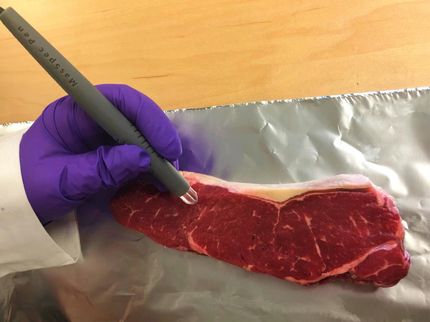The bee’s knees: New tests created to find fake honey
Researchers led by Cranfield University have developed new ways to detect sugar syrup adulteration in honey, paving the way for fast and accurate tests to discover fake products.
There is growing consumer demand for honey, with £89.8 million worth of honey imported to the UK in 2023. But as a high-value product it is vulnerable to fraud, with syrups added to dilute the pure honey – a report from the European Commission in 2023 found 46% of 147 honey samples tested were likely to have been adulterated with cheap plant syrups.
Because honey’s characteristics vary due to sources of nectar, season of harvest and geography, it can be very difficult and complex to detect adulterated products. Authentication methods are costly and time consuming, and there is a growing appetite for reliable testing and the adoption of new rules to combat fraud.
Now scientists at Cranfield University have successfully tested two new methods to authenticate UK honey quickly and accurately.
Detecting fake honey without opening the jar
A research project led by Dr Maria Anastasiadi, Lecturer in Bioinformatics at Cranfield University, with the Food Standards Agency and the UK’s Science and Technology Facilities Council (STFC), used a specialist light analysis technique to detect fake honey without opening the jar.
Samples of UK honeys spiked with rice and sugar beet syrups were tested using the non-invasive Spatial Offset Raman Spectroscopy (SORS) method - developed originally at STFC’s Central Laser Facility (CLF) - more commonly used in pharmaceutical and security diagnostics. This proved highly accurate in detecting sugar syrups present in the honey. SORS rapidly identified the ‘fingerprint’ of each ingredient in the product, and the scientists combined this technique with machine learning to successfully detect and identify sugar syrups from various plant sources.
The analysis method is portable and easy to implement, making it an ideal screening tool for testing honey along the supply chain.
Dr Anastasiadi commented: “Honey is expensive, and in demand – and can be targeted by fraudsters which leaves genuine suppliers out of pocket and undermines consumers’ trust. This method is an effective, quick tool to identify suspicious samples of honey, helping the industry to protect consumers and verify supply chains.”
DNA traces in honey used to decipher real from fake
DNA barcoding was used in a second study, in collaboration with the Food Standards Agency and the Institute for Global Food Security at Queen’s University of Belfast, to detect rice and corn syrups spiked in UK honey samples.
Scientists used 17 honey samples collected from bee farmers around the UK, representing different seasons and floral nectar sources, and bought four samples of UK honey from supermarkets and online retailers. The samples were then spiked with corn and rice syrups produced in a range of countries.
DNA barcoding – a method already used in food authentication to identify plant species in products – was effective in breaking down the composition of each sample, to successfully detect syrups even at 1% adulteration level.
“To date, DNA methods haven’t been widely used to examine honey authenticity,” commented Dr Anastasiadi. “But our study showed that this is a sensitive, reliable and robust way to detect adulteration and confirm the origins of syrups added to the honey.
“The large variation of honey composition makes it particularly difficult to authenticate. So having this consistent technique in the testing armoury could take the sting out of honey fraud.”
Sophie Dodd, who is completing her PhD on the topic of honey authentication at Cranfield University added, “It is vital to have samples of known origin and purity to validate the methods, so we want to extend our thanks to the Bee Farmers Association who we work closely with in our projects”.
The two methods developed can work together to increase chances of detecting exogenous sugar adulteration in honey.
Original publication
Other news from the department science
Most read news
More news from our other portals
See the theme worlds for related content
Topic world Food safety
Food safety is at the heart of the food and beverage industry. It ensures that the food we eat every day is not only nutritious, but also free of harmful contaminants. From field to plate, the industry monitors and regulates every step of the process with strict quality controls, advanced testing methods and continuous research.

Topic world Food safety
Food safety is at the heart of the food and beverage industry. It ensures that the food we eat every day is not only nutritious, but also free of harmful contaminants. From field to plate, the industry monitors and regulates every step of the process with strict quality controls, advanced testing methods and continuous research.






























































